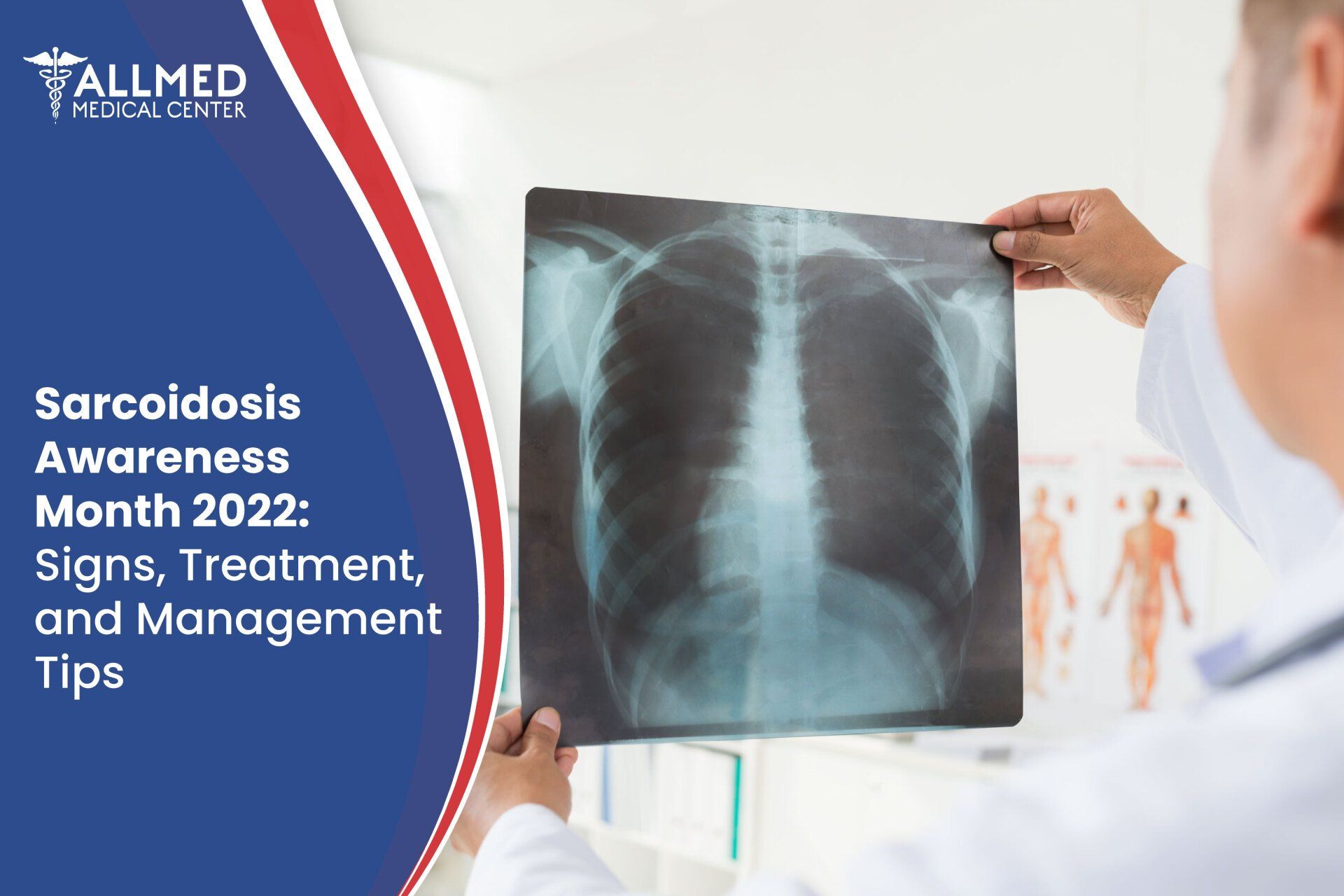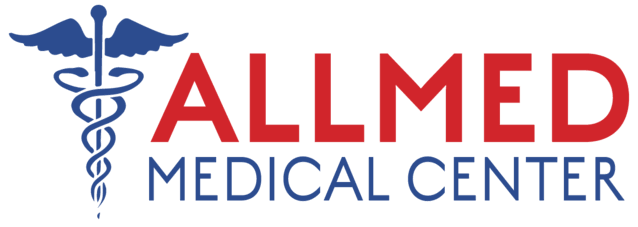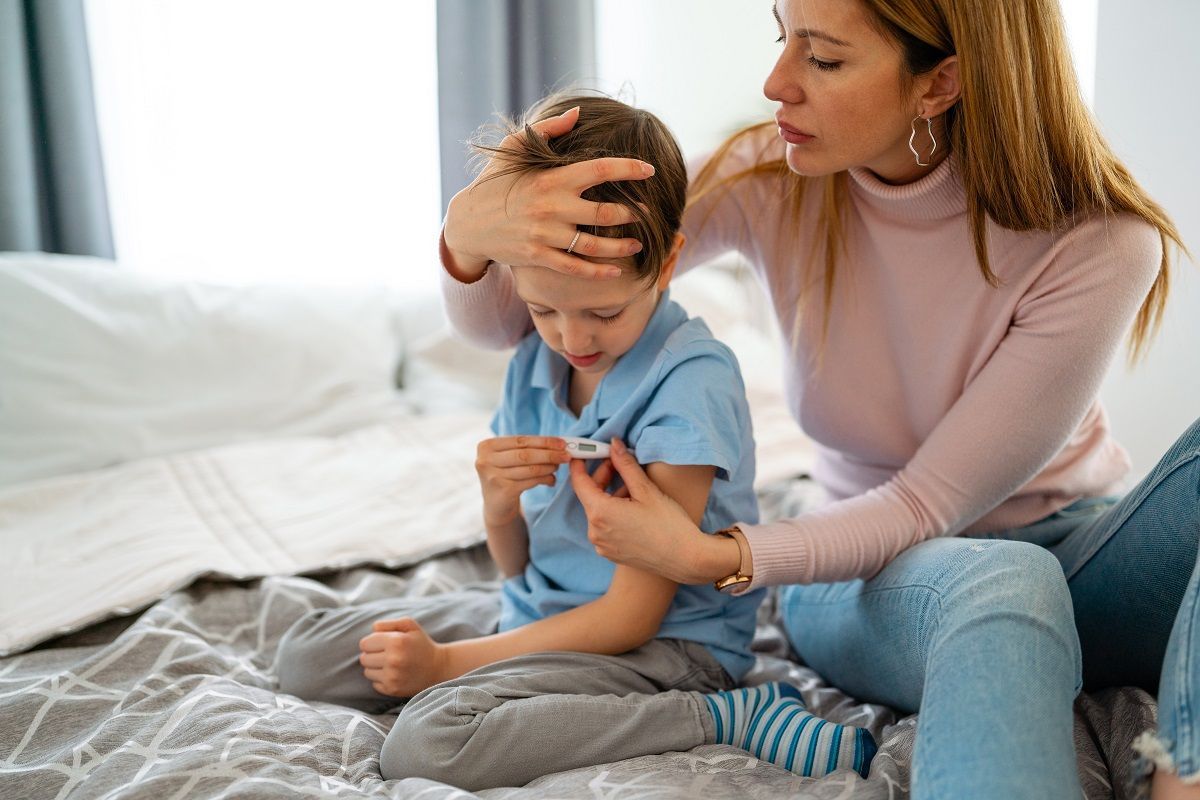
We Proudly Accept Medi-Cal and Medicare
Write your caption hereButton
Now Accepting Walk-ins!
Write your caption here

We Proudly Accept Medi-Cal and Medicare
Write your caption hereButton
Now Accepting Walk-ins!
Write your caption here

Overview
Sarcoidosis is an
inflammatory disease that could affect the lungs and other parts of the body. Its development typically characterizes the development of granulomas (tiny inflammatory cells) in the lungs and lymph glands. The disease affects thousands of individuals worldwide. Its estimates include 4 in 10,000 people in the United States alone.
Since sarcoidosis could develop in several parts of the body, its signs and symptoms differ from one case to another. We'll highlight sarcoidosis symptoms and their treatment in this blog post. Our goal is to raise sarcoidosis awareness this month and provide valuable information to people living with this disease. So, without further delay, let's begin.
Understanding Sarcoidosis
What is Sarcoidosis?
Sarcoidosis is a rare type of inflammatory disease. It causes the development of red patches (granulomas) in the organs of the body and lymph nodes. Although the lungs are mainly affected by this disease, it could also develop in other body parts like the skin, eyes, heart, and other internal organs.
The causes of sarcoidosis are unknown despite today's advancements in medical technology and research. On the other hand, medical experts believe that it is the response of the body's immune system to unknown substances. Some studies say that multiple factors may cause sarcoidosis to develop. Here are some examples:
- Exposure to infectious agents
- A combination of chemicals and dust
- An abnormal reaction to self-proteins
Unfortunately, no known cure for sarcoidosis exists today. On the contrary, people with this disease could get along well with little to no treatment.
Signs and Symptoms of Sarcoidosis
Varying signs and symptoms can appear depending on the part of the body where sarcoidosis develops. Sarcoidosis symptoms gradually develop over time but go away naturally as quickly as they come.
Since there is varying information about sarcoidosis signs and symptoms, we've compiled them depending on the affected body parts. Here's our list:
General Symptoms
Here are the early signs of sarcoidosis:
- Swollen lymph glands
- Noticeable fatigue
- Gradual weight loss
- Joint pain and discomfort (typically in the ankles)
Lung Sarcoidosis Symptoms
Around 90% of individuals with sarcoidosis develop symptoms in the lungs. Also known as pulmonary sarcoidosis in medical terms. Here are its symptoms:
- Shortness of breath
- Wheezing
- Chest pain and discomfort
- Shortness of breath (uncommon)
Skin Sarcoidosis Symptoms
Sarcoidosis can develop in people's skin. Here are the common skin problems caused by sarcoidosis:
- Reddish-purple bumps (typically tender or warm)
- Lesions in the nose, ears, and cheeks (could cause appearance disfigurations)
- Some areas on the skin appear to be lighter or darker
- Development of nodules under scars or tattoos
Eye Sarcoidosis Symptoms
Sarcoidosis in the eyes is tricky to detect since they typically don't come with any signs and symptoms. On the other hand, here are the most commonly reported signs by people who develop eye sarcoidosis:
- Pain in the eyes
- Blurry vision
- Dry eyes
- Itchiness
- Burning sensation
- Severe redness
- Light sensitivity
Heart Sarcoidosis Symptoms
Sarcoidosis in the heart is also known as cardiac sarcoidosis. Symptoms include:
- Arrhythmias (heartbeat irregularity)
- Chest pain and discomfort
- Dyspnea (shortness of breath)
- Syncope (fainting spells)
- Fatigue
- Palpitations (increased heart rates)
- Edema (swelling due to excess body fluids)
Sarcoidosis Diagnosis
The diagnosis of sarcoidosis depends on the affected part of the body. Therefore, the procedures correspond to the appropriate methods needed. For example, pulmonary sarcoidosis requires XRAYS or computerized tomography (CT Scan).
Sarcoidosis Treatment
Although there is no treatment for sarcoidosis, it is highly manageable. In some cases, individuals who developed the disease didn't require any forms of treatment whatsoever. On the other hand, it is always best to seek medical attention to be on the safe side. Here are the standard methods used in managing sarcoidosis:
Immune system suppressors. Medications that reduce inflammation like azathioprine and methotrexate have positive effects. They suppress the immune system to varying degrees.
Corticosteroids. These anti-inflammatory drugs are the primary treatment for all kinds of sarcoidosis. Its versatility is the key to why doctors recommend this drug. It comes in the forms of eye drops, cream, and tablets.
TNF-Alpha Inhibitors. Tumor Necrosis Factor-alpha inhibitors are drugs for rheumatoid arthritis treatment. Their primary use is to reduce inflammation, making them ideal for sarcoidosis management. Doctors prescribe TNF-Alpha Inhibitors if the other treatment methods do not produce satisfactory results.
Hydroxychloroquine. Doctors prefer these drugs to manage skin lesions caused by skin sarcoidosis. What's more, it is ideal for elevated blood-calcium levels.
Worst cases of sarcoidosis development may require invasive procedures to save the affected organ from further deterioration. However, surgery is very uncommon.
Final Thoughts
Sarcoidosis rarely develops to uncontrollable levels. It typically goes away naturally, without a doctor's intervention. On the other hand, regular checkups are still your best option when you have sarcoidosis. Doctors can detect early signs and symptoms of sarcoidosis. Therefore, they can offer you the best treatment methods to manage its growth.
In addition, joining sarcoidosis campaigns can also be beneficial. By sharing your experience and best practices in managing sarcoidosis, you can help many people worldwide. Share your story, attend events, and we guarantee that you'll reap their benefits in treating sarcoidosis in no time.
Manage Sarcoidosis Effectively
Allmed Medical Center offers the best primary care services for you and your family. Our providers have years of experience managing all kinds of sarcoidosis with proven methods and high success rates. We aim to keep your health in top condition with our wide range of
healthcare services. Our doctors have multiple medical specialties guaranteed to keep you safe against sarcoidosis.
Schedule an appointment today by dialing 1-8333-255-6332. Let's talk about your health and preferred schedule.
AllMed Medical CentersServing
Greater Sacramento
Allmed Medical Center | All Rights Reserved.










